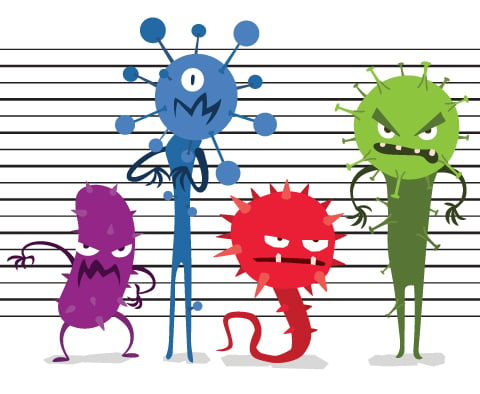Chlamydia trachomatis (CT)
Chlamydia trachomatis (CT) is a sexually transmitted disease (STD) that can infect both women and men. In women, CT can infect the cervix, rectum, or throat. In men the urethra, rectum, or throat be infected.
CT is the most common bacterial STD in the United States. It mostly affects young women, but can occur in women and men of all ages. Left untreated, it can cause pelvic inflammatory disease in women.
CT Symptoms
Common CT symptoms in women include:
- Vaginal discharge that may have a strong smell
- Burning sensation during urination
- Pain during intercourse
Common CT symptoms in men include:
- Discharge from the penis
- Burning or itching around the opening of the penis
- Pain and swelling in one or both testicles (less common)
Women and men can get chlamydia in the rectum, which will cause rectal pain, discharge and bleeding.
If you or your partner has symptoms of CT, or if your partner has been diagnosed with CT, it is important to be tested, even if you don’t have symptoms.
MicroGenDX Test Used in Diagnosing CT
A CT test may be done in the clinic and sent off to a lab, or you can do an at-home test. An evaluation and culture (growing microbes from your sample in a lab) are often used to diagnose CT. However, standard cultures may come back negative even when you actually do have an infection, and that means your infection won’t be treated. A MicroGenDX test detects the DNA of all microbes in your sample, along with how much of each is present, and uses that information to identify the bacteria in your infection and the drugs that can best treat it. It is important to know that not all antibiotics work for all bacteria, and some even work differently in different areas of the body. Your doctor should consult the "antimicrobials for consideration" chart on your MicroGenDX report to decide what antibiotic is right for you.
The CT test is included in the “Basic STI Panel” test and the “Full STI Panel” test. “STI” stands for “sexually transmitted infection,” which is another name for STD. You can order the test and get sampling instructions here:
https://microgendx.com/product/full-sti-panel-dm-intl/
https://microgendx.com/product/basic-sti-panel-dm-intl/
Providing a Sample for the CT Test
You will need to provide a urine sample for this test. It’s very important to obtain a proper sample by following the instructions for collecting the sample, as well as when packaging and shipping it.
Everything you need to know about taking a sample is included with your test, and is also available online on the product pages for each test. The instructions contain illustrations that will help you collect a sample without contaminating it. For example, you will need to wash your hands thoroughly and clean your genital area with soap and water, and pay special attention to the sex-specific instructions so that bacteria on the skin aren’t included in your sample.
Medical Specialties Treating CT
Chlamydia can be treated by a primary care physician, urologist, or OB/GYN.
How CT is Treated
CT is treated with antibiotics. It is important to complete the full course of medication when it is prescribed, even if symptoms begin to clear up before you are finished.
References
- https://medlineplus.gov/chlamydiainfections.html
- https://www.merckmanuals.com/home/infections/chlamydial-infections-and-mycoplasmas/chlamydial-infections?query=Chlamydia
- https://www.cdc.gov/std/chlamydia/stdfact-chlamydia.htm
- https://www.mayoclinic.org/diseases-conditions/chlamydia/symptoms-causes/syc-20355349

